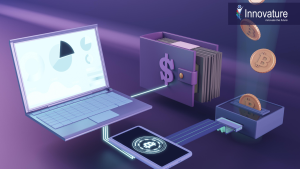



The tech industry is constantly evolving, with new trends and innovations emerging on a regular basis. As we look ahead to 2023, it’s clear that the market is poised for some significant changes. To help tech providers stay informed and prepare for what’s to come, we’re taking a look at the top predicted trends for 2023 to help you anticipate how we can capitalize on these emerging opportunities.
We’ve chosen to highlight a handful of the Gartner-identified possibly significant developments that could have an impact on the market in 2023.
1. Federated Tech Buying
In a federated buying model, each organization or department maintains its own procurement operations and budgets, but they come together to create a larger, aggregated purchasing entity. The purchase decisions shift from technology to value scenarios and outcomes when there are more decision-makers and influencers from outside of IT.
Even though federated buying is still in its infancy in many businesses, a 2022 Gartner survey revealed that 67% of enterprise-tech decision-makers are not in IT.
2. Increase in PLG strategies
Product led growth strategies (PLG) views the product as the main factor in attracting, converting, and retaining customers. According to Gartner, by 2025, PLG will be a standard component of go-to-market practices for 90% of SaaS companies.
Apparently, a 2021 survey reveals that more than 50% of free trials or freemiums resulted in a purchase. Success, however, is far from guaranteed and requires more thought and work than merely releasing a product’s free version on the market.
3. Digital Marketplaces
By the year 2026, all major cloud platforms and enterprise application providers are expected to offer business component marketplaces as per Gartner. These marketplaces will enable customers to assemble various software components and services to create custom solutions that meet their specific business needs.
This shift towards composable strategies is expected to drive growth in the coming years.
4. Rise of Techno Nationalism
Techno-nationalism is a trend that refers to the use of technology as a tool to further national interests and create economic and technological independence. This trend has been fueled in part by concerns about cybersecurity and the protection of sensitive information, as well as by geopolitical tensions and trade disputes.
Some countries have implemented policies to support domestic technology industries. Others have restricted the use of foreign technology in certain sectors.
While this can provide benefits to domestic technology industries and promote economic growth, it can also lead to fragmentation of the global technology ecosystem and limit collaboration and innovation across borders. It is important to strike a balance between protecting national interests and fostering global cooperation and innovation.
5. Intelligent Applications
The adoption of intelligent applications is expected to increase significantly over the next few years, as companies look to streamline their operations and gain a competitive edge. This trend is likely to drive the development of new AI-powered applications and platforms, as well as the integration of AI and machine learning capabilities into existing software and systems.
It is clear that these trends will have a significant impact on the technology landscape and will present both opportunities and challenges for tech providers. The key to success for tech providers will be to invest in research and development, adapt to changing market needs, and provide innovative solutions that meet the demands of their customers.
The future of technology looks promising, and tech providers who are proactive in embracing these trends are well-positioned for success in the years to come.


In the dynamic realm of legal proceedings, efficiency is not just a luxury but a necessity. Software development companies stand poised to revolutionize legal support services, offering solutions that streamline operations with unparalleled precision and speed.


In the annals of Human Resources (HR), the introduction of Artificial Intelligence (AI) has marked a transformative leap that reshapes the traditional contours and opens doors to unprecedented efficiency.


Blockchain is a decentralized ledger or database that is distributed across a network of computers. Every block in this chain holds a unique cryptographic hash of its preceding block, along with a timestamp and transaction details.